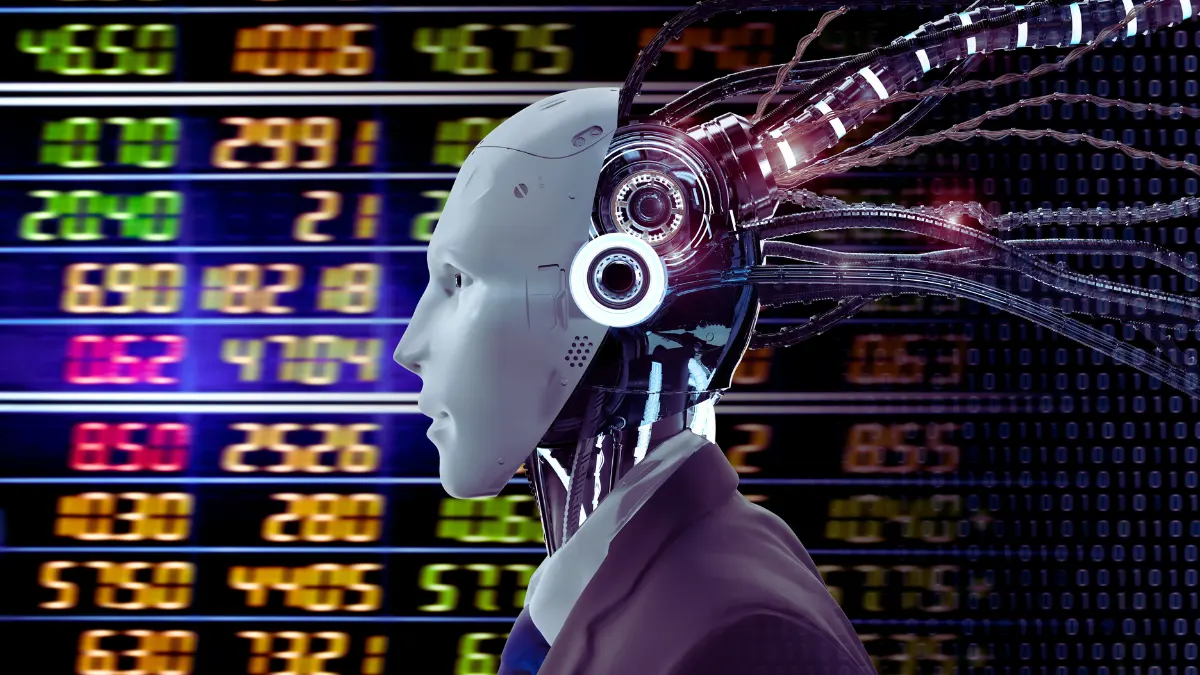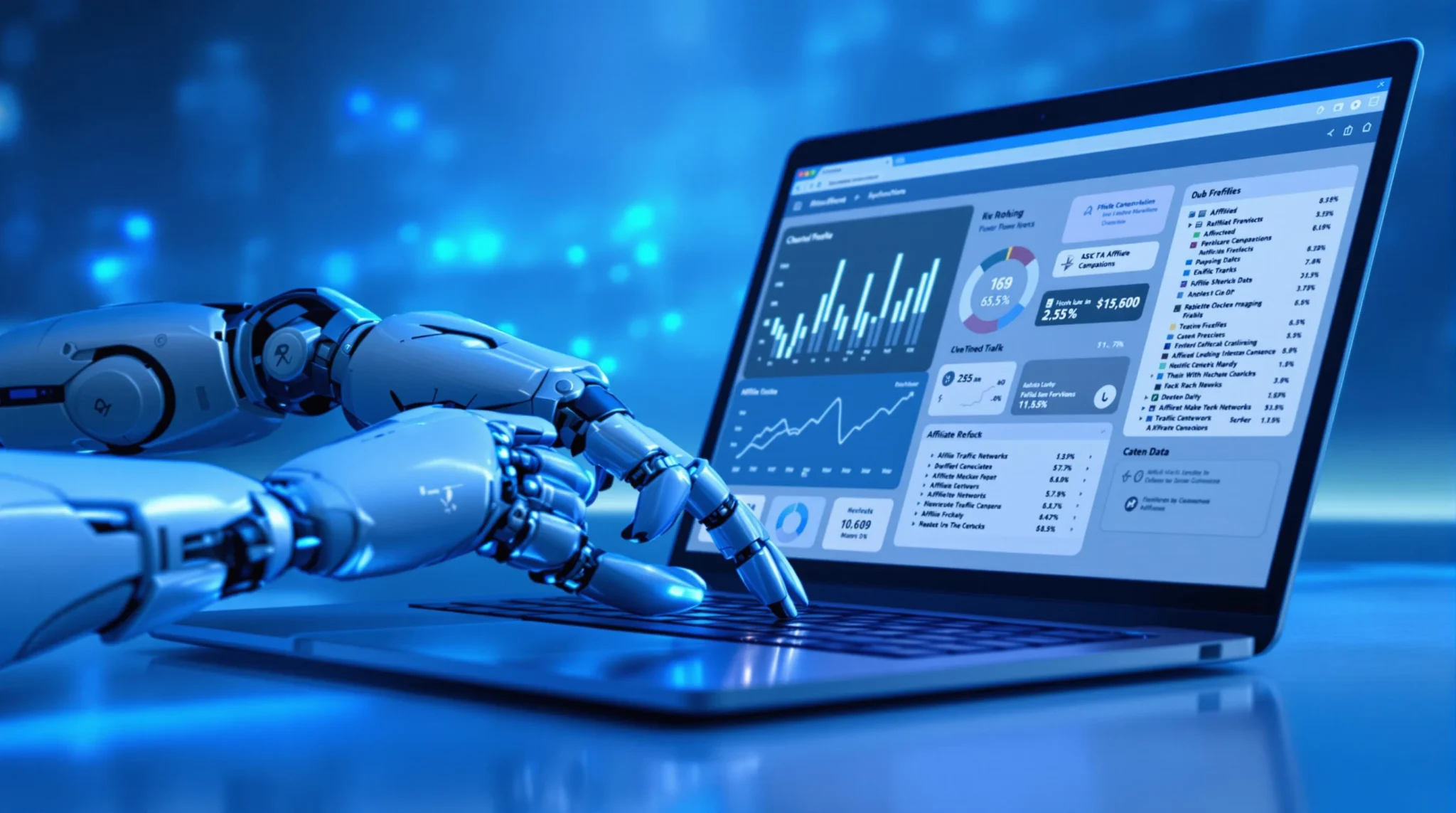The AI market soars to record heights, with Nvidia hitting $3 trillion and startups raising $50 billion in 2023. But beneath the glittering surface, storm clouds gather.
Major investors warn that the industry needs $600 billion in annual revenue to justify these valuations, while even AI leader OpenAI generates just $3.4 billion.
What happens when reality catches up with the hype? As venture capitalists tighten their belts and regulators circle, we’re seeing signs of a bubble ready to burst.
Let’s look at what’s coming and how it will reshape the AI landscape in 2025 and beyond.

Is the AI Gold Rush Over?
The AI market stands at a pivotal moment in early 2025. Major tech companies and startups alike face mounting pressure as investors scrutinize the gap between promises and actual returns.
This shift marks a critical phase in the AI industry’s evolution, with signs pointing to a potential market correction.
Current Market State

Nvidia’s meteoric rise to a $3 trillion valuation showcases the intense market enthusiasm for AI technology.
Throughout 2024, venture capital poured $50 billion into AI startups, even as overall tech investment hit a five-year low.
Tech giants like Microsoft, Google, and Meta have seen their stock prices soar on AI-related announcements.
Many companies now incorporate AI mentions into their pitch decks, hoping to catch the wave of investor excitement.
The market shows striking similarities to the dot-com era, with valuations often disconnected from revenue.
Companies with even tangential connections to AI have experienced stock price surges. The infrastructure supporting this boom has grown substantially.
Data centers run at capacity, chip manufacturers can’t keep up with demand, and cloud computing providers report record usage. Yet questions linger about the sustainability of this growth pattern.
Investment Reality

Current investment patterns reveal a stark contrast between market expectations and financial results.
While the industry needs $600 billion in annual revenue to sustain its valuations, even industry leader OpenAI generates only $3.4 billion yearly.
This gap hints at potential market corrections ahead. Startup funding shows concerning trends, with many companies receiving significant investments despite lacking proven business models.
Investors pour money into AI ventures based on potential rather than actual performance.
The pattern mirrors previous tech bubbles, where excitement outpaced realistic growth prospects.
Reports from major investment banks raise red flags about the sustainability of current spending levels.
Goldman Sachs recently questioned whether companies investing heavily in generative AI will see sufficient returns.
These concerns reflect growing skepticism about the immediate profitability of AI implementations.
Warning Signs

Several warning signs point to potential market instability. Large Language Model development costs continue to spiral upward, with each new model requiring exponentially more resources.
GPT-4’s training consumed 50 times more energy than its predecessor, yet delivered smaller performance gains.
Technical challenges persist across the industry. Many AI products offer similar functionalities, mainly focusing on chatbots and basic automation tools.
True innovation proves scarce, with most companies simply adding AI layers to existing services rather than creating groundbreaking solutions.
Public trust issues compound these problems. Users report growing skepticism about AI reliability, particularly regarding hallucinations and accuracy.
Regulatory pressures mount worldwide, with new frameworks threatening to increase operational costs and complexity for AI companies.
What Happens When the Bubble Bursts
Financial experts predict significant market adjustments in the AI sector within the next 4-5 years.
Understanding these changes helps businesses and investors prepare for the aftermath. Looking at historical tech bubbles provides insights into what we might expect.
Short-term Impact

Stock prices will likely face sharp corrections once the bubble bursts. Companies with high valuations but low revenues will see the biggest drops.
Analysts estimate some AI-focused stocks could lose 60-80% of their value, similar to the dot-com crash.
Small startups without solid revenue streams will struggle to secure new funding.
Many will shut down or sell to larger companies at reduced valuations. Venture capital firms will tighten their requirements, demanding clear paths to profitability before investing.
Job markets in the AI sector will contract as companies cut costs. Engineers and researchers might see fewer opportunities and lower salaries.
Cloud computing providers could face reduced demand as companies optimize their AI spending.
Industry Changes

A market correction will force companies to focus on practical AI applications that generate real value.
Businesses will prioritize cost-effective solutions over experimental projects. This shift will lead to more sustainable growth in the AI industry.
Marketing hype around AI will decrease as investors demand concrete results. Companies will need to show how their AI solutions improve efficiency or cut costs.
Those that can’t prove their worth will lose market share or disappear entirely. Technology development will slow but become more focused.
Rather than chasing the next breakthrough, companies will work on making existing AI more reliable and efficient. This approach will create better products that solve business problems.
Survivor Traits

Companies that survive the bubble will share key characteristics. They’ll have strong cash reserves and multiple revenue streams.
Their AI products will solve real problems and generate measurable returns for customers.
Smart resource management will become crucial. Successful firms will use efficient training methods and optimize their infrastructure costs.
They’ll build sustainable business models that don’t rely on constant external funding.
Customer relationships and trust will matter more than ever. Survivors will maintain transparent communication about their AI capabilities and limitations.
They’ll focus on building long-term partnerships instead of chasing quick profits through overhyped solutions.
RELATED:
The AI Investment Bubble!
Parallels between today’s AI market and previous tech bubbles grow stronger each month.
MicroStrategy Partnership and other financial analysts point to unsustainable growth patterns. Venture capitalists and market experts now sound alarms about overvalued companies and unrealistic expectations.
Bubble Indicators

Money flows into AI startups at unprecedented rates while traditional tech investments decline.
Data shows venture funding hit $50 billion for AI companies in 2023, making up nearly 20% of all tech investments.
These numbers signal an imbalanced market focused on hype over substance.
Most new AI products lack unique features or breakthrough technologies. Companies simply repackage existing tools with an AI label to attract investors.
This trend mirrors the late 1990s when businesses added “.com” to their names to boost stock prices. Infrastructure costs reveal another warning sign.
Server farms running AI models consume massive amounts of electricity, yet companies rarely factor these expenses into their financial projections. Operating costs keep rising while revenue streams remain uncertain.
RELATED:
Expert Predictions

Financial analysts see a two-phase market correction ahead. Initial pressure will build over the next 24 months as investors demand clearer profit metrics.
A full market adjustment should follow within 4-5 years once the reality of development costs hits home.
Leading venture capitalists now adjust their investment strategies. They look beyond flashy AI demonstrations toward sustainable business models.
Many predict a wave of consolidation where stronger companies absorb failing startups at discount prices.
Research firms estimate only 15% of current AI projects will succeed long-term. Companies focusing solely on generative AI face the highest risk.
Success rates improve for businesses combining AI with established revenue streams.
RELATED:
Risk Factors

Technical limitations pose serious threats to current AI valuations. Large language models show diminishing returns despite increased computing power.
Training costs rise exponentially while performance gains shrink with each new version.
Regulatory changes add another layer of risk. New laws in Europe and Asia require extensive testing and documentation for AI systems.
These requirements increase development time and costs while limiting potential applications.
Market competition intensifies as more players enter the field. AMD and other chip makers challenge Nvidia’s dominance in AI hardware.
Cloud providers offer competing AI services, pushing prices down and squeezing margins across the industry.
Future Outlook
Beyond market corrections and bubble concerns, AI technology continues to transform industries in meaningful ways.
Real innovations emerge as companies focus on practical applications rather than hype. This transformation points to lasting changes in how businesses operate and compete.
Post-bubble Opportunities

Small companies will find new niches as the market matures. Specialized AI solutions for healthcare, manufacturing, and education show strong growth potential.
These focused applications generate clear value and measurable returns. Energy-efficient computing opens doors for sustainable AI development.
New chip designs and improved algorithms reduce power consumption while maintaining performance.
Local processing and edge computing creates opportunities for smaller players to compete.
Business automation tools become more accessible and affordable. Companies can implement AI solutions without massive infrastructure investments.
This democratization lets more businesses benefit from AI technology while keeping costs in check.
Market Evolution

Innovation shifts toward solving real business problems. Companies focus on reliable, maintainable AI systems instead of chasing headlines.
The quality of results matters more than raw processing power or model size. New development tools streamline AI implementation.
AutoML platforms help companies build custom solutions without huge research teams.
These advances cut costs and speed up the deployment of useful AI applications.
Market segments are split between commodity AI services and premium solutions. Basic tools become standardized while specialized applications command higher prices.
This separation creates opportunities for both large and small companies to thrive in their chosen markets.
Tired of 9-5 Grind? This Program Could Be Turning Point For Your Financial FREEDOM.

This AI side hustle is specially curated for part-time hustlers and full-time entrepreneurs – you literally need PINTEREST + Canva + ChatGPT to make an extra $5K to $10K monthly with 4-6 hours of weekly work. It’s the most powerful system that’s working right now. This program comes with 3-months of 1:1 Support so there is almost 0.034% chances of failure! START YOUR JOURNEY NOW!

